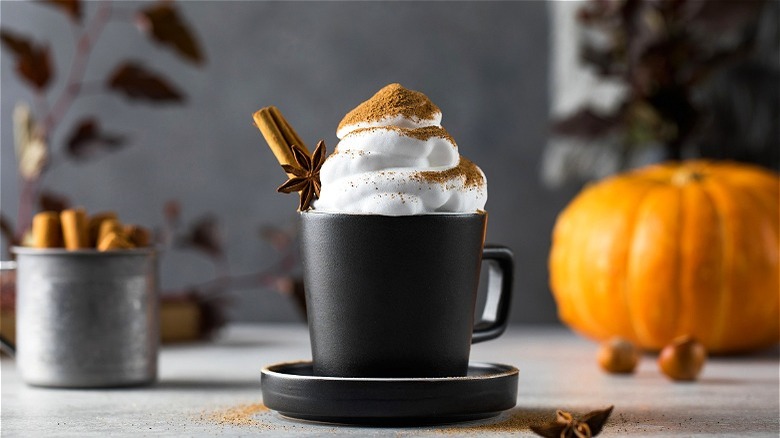The Reason Mint Is Such A Popular Holiday Flavor
For many people, the start of the holidays signifies homemade gingerbread houses, cookie parties, and store-bought confections perfect for gifting to friends and loved ones. In 2018, the National Confectioners Association discovered that over 90% of Americans planned to gift or indulge in sweet treats during the holiday season. Until at least January 1, the aromas of rich melted chocolate, candied nuts, and robust peppermint fill homes across the country amidst the congregations of family and friends coming together. Yet, how did the indulgence of these flavors and special treats become connected to the holiday season?
Beyond the 13 holiday desserts you can make in a jar, whether you decide to join in the festivities by making Ina Garten's peppermint hot chocolate or the simple peppermint fudge recipe brought to you by Ree Drummond, it's clear that mint or in this case, peppermint serves as a classic holiday flavor. According to TIME, the United States produces over 1.7 billion candy canes each year with most selling between the end of November and Christmas day. Yet how did mint become synonymous with the festive season?
Mint's seasonal history
Surprisingly, Eat The Planet claims that consumption of peppermint can be traced back to ancient Egypt over 3,000 years ago for healing and medicinal purposes, yet mint candy didn't come about until sometime between the 14th and 17th centuries of the Renaissance period (via Food Timeline). Laura Mason, author of "Sugar Plums and Sherbet," notes the long-standing belief that, along with mint, sugar also had purported health properties. When sugar and mint were at some point fused together with medicinal plants, mint products were introduced and shown to be somewhat helpful for reducing symptoms of the common cold as well as promoting digestion. This marks the beginning of mint's intrinsic connection to sugar and its eventual transformation into candy.
History outlines the folklore surrounding the birth of candy canes and while nothing has been proven to be 100% true, according to Susan Benjamin, founder of "True Treats Historic Candy," candy canes were most likely invented at some point in the 17th century. However, the holiday staple didn't make its way to America until 1847 when one tree was decorated with the classic hooked treats by German-Swedish immigrant August Imgard. CBS News claims that the Christmas candy we know and love didn't become an American mainstay until Bob McCormack of "Bob's Candies" took over the industry in the 1920s. While folklore and the rise of candy may have pushed peppermint into holiday stardom, mint is not the only flavor people enjoy during the holidays.
What other flavors signify the festive season?
While the relationship between mint and sugar has led to candy cane flavors you never knew existed, peppermint is not the only flavor enjoyed during the winter season. Bob's Red Mill extrapolates on the significance of gingerbread and the ever-present hazelnut flavor during the holidays. Enjoying a variety of nuts has been adopted by many holiday lovers over the years and Bob's Red Mill connects this tradition to the stories of St. Nicolas bearing fruit and nuts for children of the past.
According to Capri Cafaro, author of "United We Eat," people have strong emotions regarding holiday food since most of the dishes we enjoy once a year are directly linked to our family heritage (via Yahoo!). They make us feel warm and fuzzy and allow us to reflect on the past in a positive way. Based on a 2022 survey conducted by OnePoll and the Spam brand, 2,000 participants voted on flavor preference in correlation to their feelings of nostalgia and holiday memories (via Zenger). Out of all the options, cinnamon was the most popular, followed by pumpkin, peppermint, cocoa, and nutmeg. Whichever flavor you crown as the holiday winner, there's a good chance your flavor of choice breeds positivity and is perhaps connected to one or two of your fondest seasonal memories.


